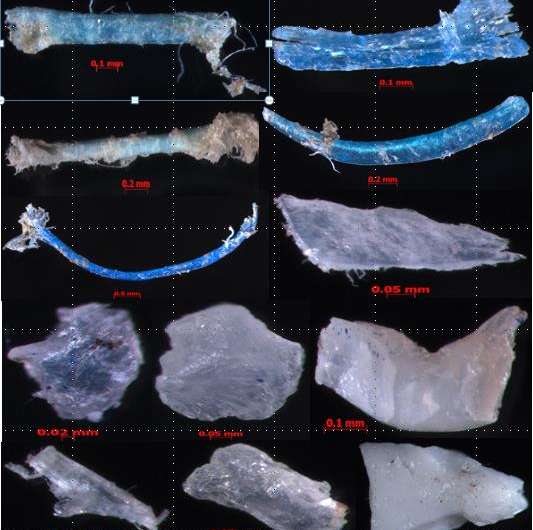Research shows prevalence of microplastics within the Gulf seawater

Researchers in Qatar have documented the first evidence for the prevalence of microplastics within the Gulf seawater, specifically in the marine waters of Qatar.
A research study conducted by senior researchers from Qatar University Environmental Science Center (QU-ESC) have documented the first evidence for the prevalence of microplastics within the Gulf seawater, specifically in the marine waters of Qatar.
Led by ESC former Director and Professor Dr Jeff Obbard, the team includes ESC Associate Professor Dr Ibrahim Maslamani and Laboratory Technician Azenith Castillo. They developed an optimized and validated protocol for the extraction of microplastics from plankton-rich samples in Qatar's seawater. The study has been published in the prestigious scientific journal Marine Pollution Bulletin.
The team collected surface seawater microplastic samples from 12 stations during a research cruise in Qatar's coastal waters by QU's research vessel (RV) Janan. Then, the number of microplastic particles in seawater was counted and characterized using Fourier Transform Infrared Spectroscopy to determine the plastic polymer type. The study showed that microplastics were found in seawater of 10 over 12 of the marine water stations sampled, at an average concentration of 0.71 particles per cubic meter of seawater (range 0-3 particles m-3).

"Polypropylene microplastics were the most common type of plastic polymer found with the most particles being either granular or fibrous in shape, with sizes from 125μm to 15.98mm", Dr Obbard said. Such microplastics are commonly associated with general plastic packaging waste, and marine fishing nets. He noted that the levels of microplastics found in Qatar's marine waters are still relatively low compared to some other locations around the world, but vigilance is needed.
Dr Obbard added: "Over time, plastic ultimately results in the generation of microplastics—tiny pieces of plastic typically less than 5mm in diameter. Microplastic particles can contaminate marine water and sediments, and are increasingly found in the marine food chain with the potential to contaminate fish and other types of marine seafood. The impact of plastic pollution in the marine environment is of increasing global concern. As plastic is durable and degrades slowly in the environment, plastic debris is now widespread in the world's oceans. Approximately eight million tons of plastic waste ends up in the oceans every year, and it is predicted that by the year 2050 the amount of plastic waste in the world's oceans could exceed the amount of fish present, on a weight-to-weight basis. Qatar's coastline is susceptible to marine debris due to the county's rapid urbanization and economic development. Plastic can also affect Qatar's coastline from further afield, as it drifts long distances on ocean currents and tides. The study highlights the need for continuous monitoring of microplastics in Qatar's coastal seawaters in order to safeguard the marine environment and its ecology."
Commenting on the study ESC Director Dr Hamad Al-Kuwari said: "Qatar has a rich marine cultural heritage and a bio diverse environment. ESC continues to deliver on its mission to understand and protect this precious natural resource for the benefit of the Qatari people. This research study reflects ESC's commitment to conduct fundamental and applied research in the environmental sciences, including the marine, atmospheric, and terrestrial environments, in line with the Environmental Development pillar of Qatar National Vision 2030."
Journal information: Marine Pollution Bulletin
Provided by Qatar University

















